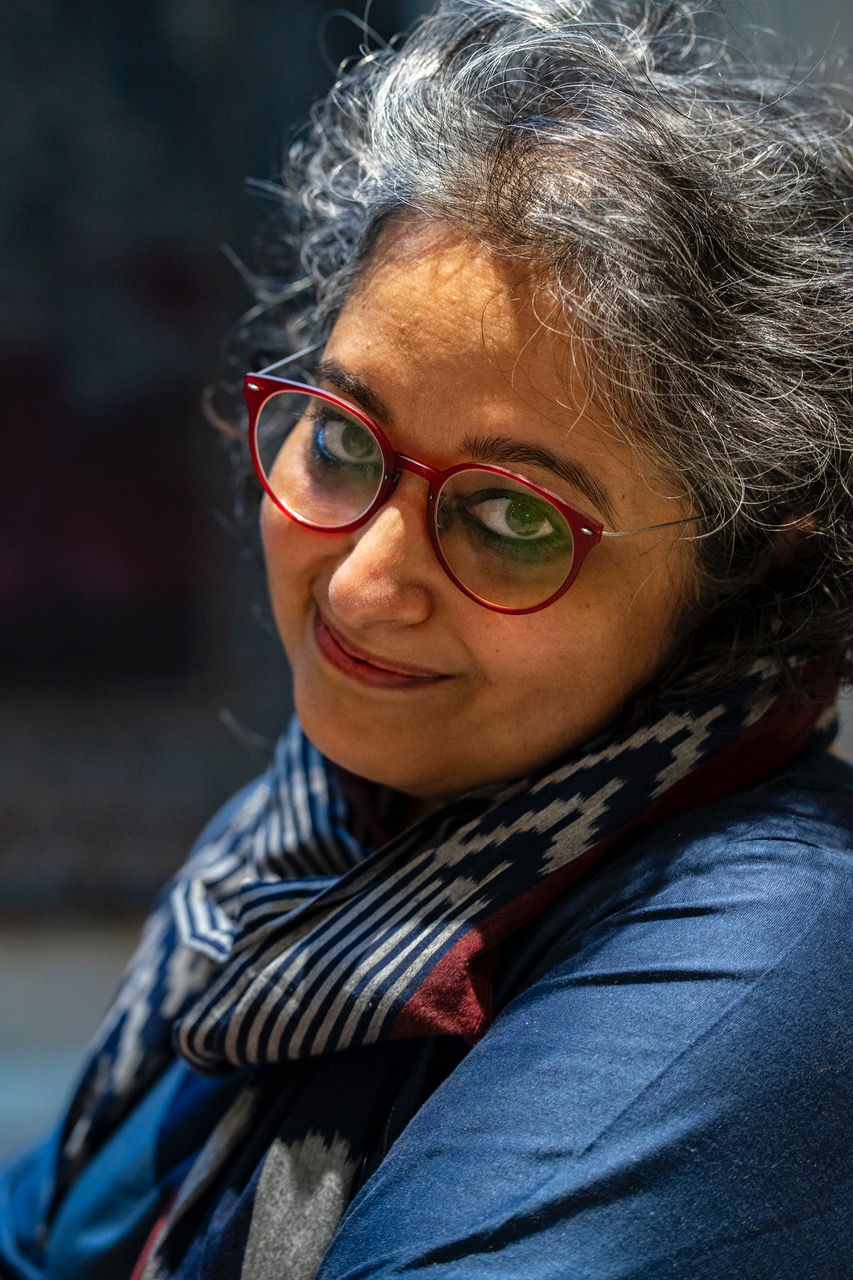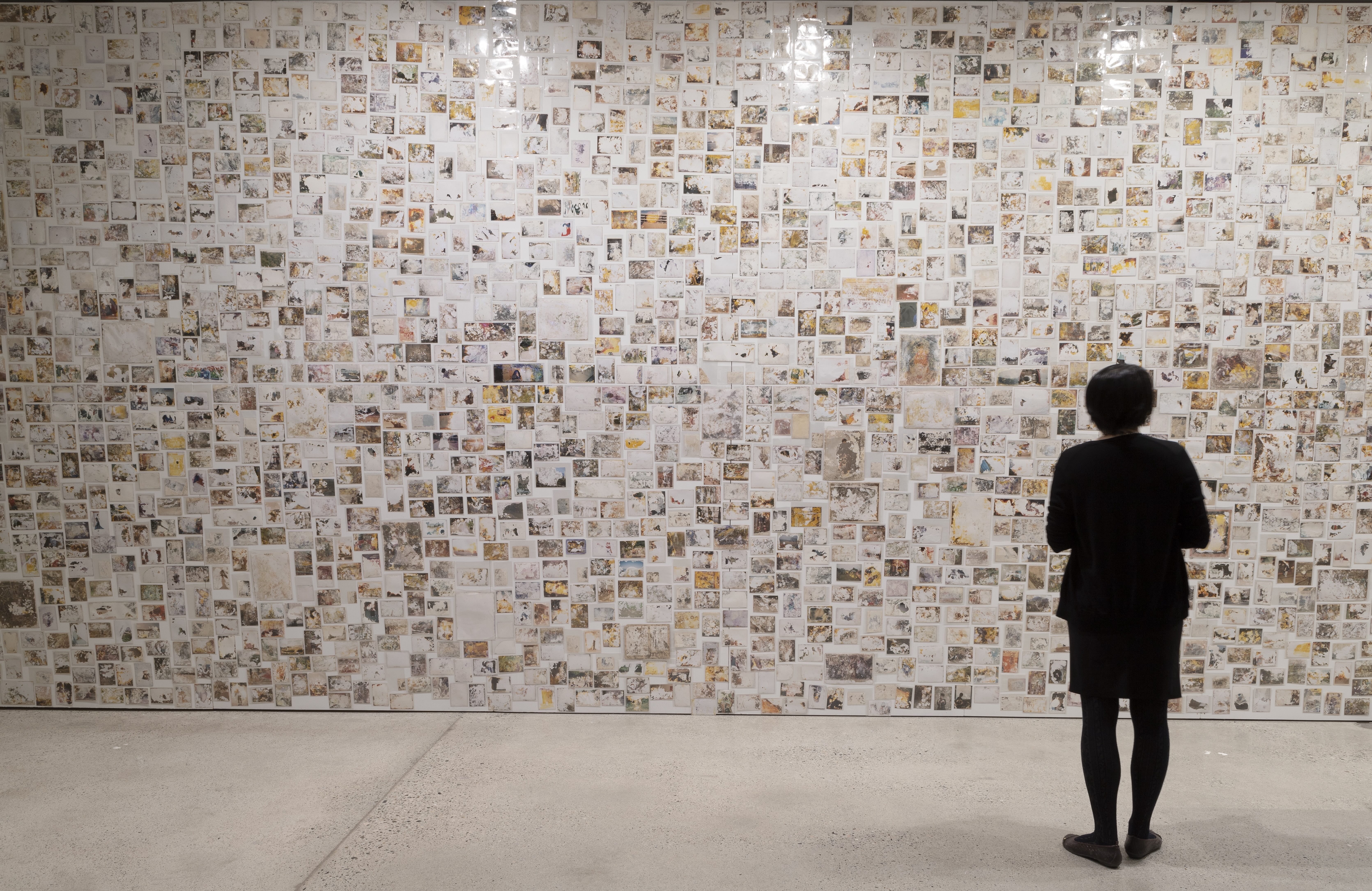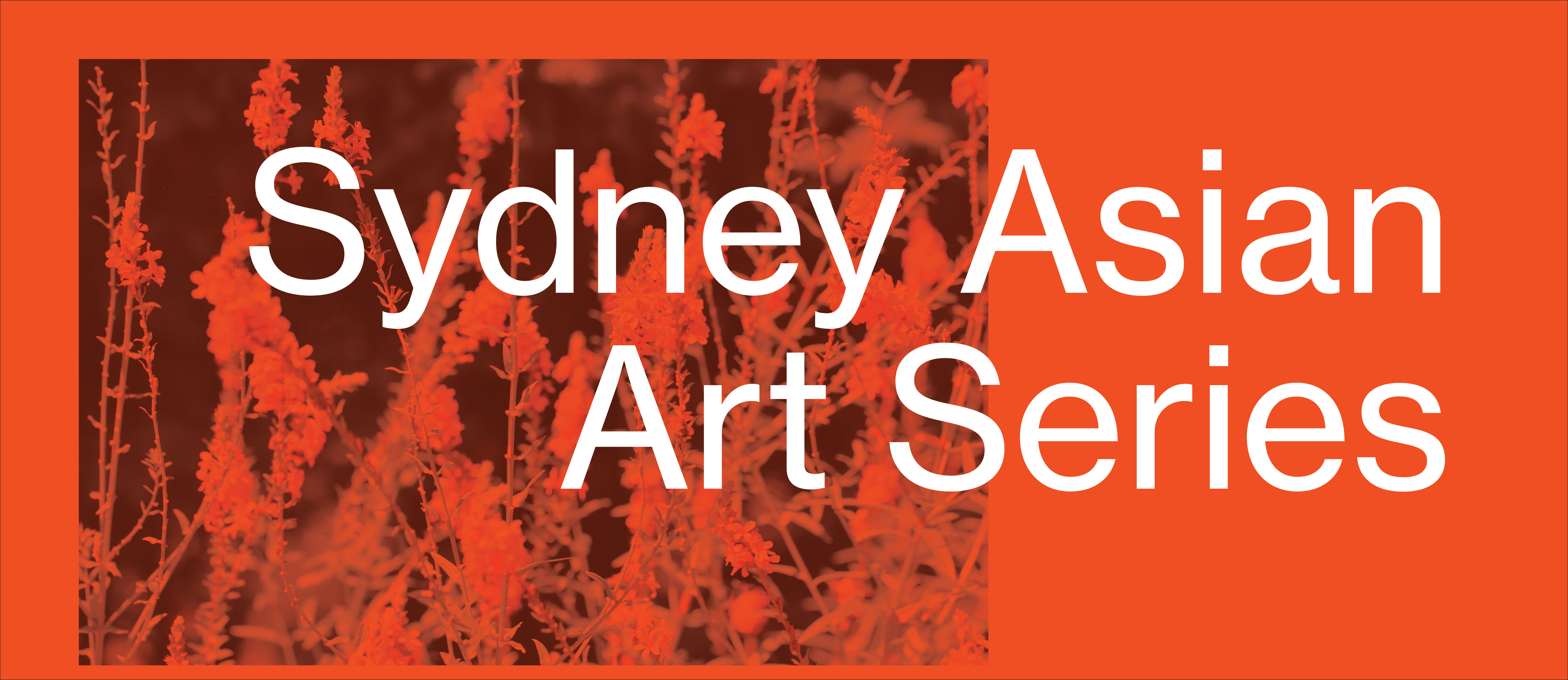Unfurling the Practice of Curā: Tracing Historical Claims and the Ongoing Custodianship of Letter Scrolls from Local Bazaars

Our Sydney Asian Art Series Scholar in Residence Dipti Khera unpacks the visual world of vijnaptipatra, and the little known histories of early modern and colonial India that they contain.
Ghanerao, Rajasthan, India, Vijnaptipatra invitation letter, mid-18th century (detail), opaque watercolour and ink on paper, 822 x 29 cm, Art Gallery of New South Wales, purchased with funds provided by the Asian Art Collection Benefactors 2006, image © Art Gallery of New South Wales.
Scrolls of painted letters transmitted significant histories from the local bazaars of early modern and colonial India. Yet they are rarely seen and have been marginalized in art museums due to their vernacular visuality, large scale, and material fragility. A vijnaptipatra, an invitation letter that could be up to 75 feet long, was sent by merchants to eminent Jain monks who sought to entice recipients with images of flourishing places in order to mobilise them to walk vast tracts of land on foot. In these letters, painters and scribes encouraged monks to imagine their future assemblies during the forthcoming monsoon season against depictions of notable events and everyday life of the inviting town. Why have lesser-charted publics, politics, and perspectives bundled in such invitations remained hidden? As contemporary viewers of these scrolls, how do we understand the visual and textual encoding of power relations among actors across class, caste, gender, devotional affiliations, and colonial orders? How do we handle their heterogeneity and materiality?
Fragmented letter scrolls trace out the shape of times and stories from the street level, alongside trans-regional connections and disconnections often unseen in archives of imperial and regional courts or European companies. At the same time, though studying these vijnaptipatra, the colonial and twentieth-century politics of cūra unfurl, asking us to look again at histories of custodianship and critical practice from the early years of establishing regional archives in postcolonial India. Wrapped up in the care and cataloguing of painted letters by communities of librarians and monk-scholars, often bound to the singular sphere of Jain religious studies, are threads that entangle local bazaars and global art markets, curation and conservation, and private collectors and national museums.
Series convened by Olivier Krischer and Peyvand Firouzeh, and co-presented by the Power Institute and VisAsia at the Art Gallery of NSW.
Learn more about Dipti Khera, our Scholar in Residence
People

Dipti Khera
Dipti Khera is Associate Professor in the Institute of Fine Arts and Department of Art History at New York University. With interdisciplinary training in art history, museum anthropology, and architecture, her research and teaching on early modern South Asia integrate longue durée perspectives and Indian Ocean and Eurasian geographies. Khera's The Place of Many Moods: Udaipur's Painted Lands and India's Eighteenth Century (Princeton University Press, 2020) was awarded the Edward Cameron Dimock, Jr. Prize in Indian Humanities. Her co-edited volumes include the catalogue for A Splendid Land: Paintings from Royal Udaipur (Hirmer Publications, 2022), an exhibition she co-curated at the National Museum of Asian Art (Smithsonian Institution) and the Cleveland Museum of Art; "The 'Long' Eighteenth-Century?" Journal18 (December 2021); and Readings on Painting: From 75 Years of Marg. Volume 74 No. 4 and Vol 75/ No 2. Mumbai: Marg Publications (June-September 2023). In 2023-24, she held the American Institute of Indian Studies-National Endowment for Humanities Senior Fellowship in affiliation with the School of Arts and Aesthetics, Jawaharlal Nehru University, to conduct new research on painted letters sent from local bazaars of early modern and colonial India. While in residence at the University of Sydney, she will draw upon this research, including examples in Australian collections, ongoing work with colleagues on the provenance and conservation histories of these letters, and a collaborative project on the stakes and histories of mapping In South Asia.


